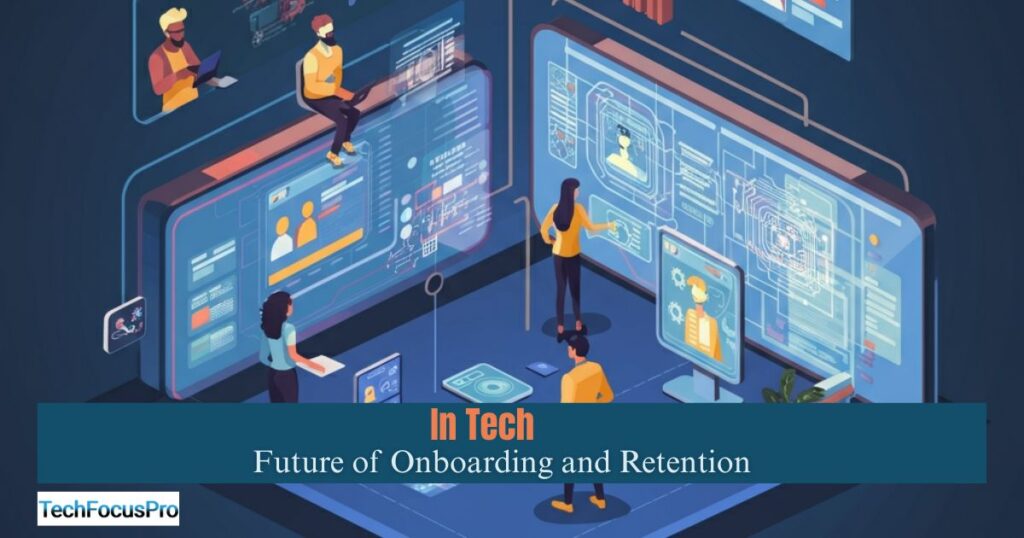Optimizing Onboarding and Retention to Reduce Turnover in Tech Roles

High turnover rates in tech roles have become a common challenge for many companies. When employees leave frequently, it increases costs, causes the loss of valuable skills, and causes disruption.
This is why having a clear and well-structured onboarding process and strong retention strategies is so important. Proper onboarding helps new hires feel welcome, supported, and prepared for their roles, while effective retention strategies keep talented employees motivated to stay long-term.
This document explores these ideas and shows how they can help technology-focused organizations create more stable and prosperous teams.
The Challenge of Employee Turnover in Tech
Employee turnover is a big challenge in the tech industry. Research shows that tech companies often face high turnover rates compared to other sectors. Some studies estimate that the annual turnover rate for tech jobs can be as high as 20%, much higher than the national average across all industries.
When employees leave, businesses feel pressure. Losing skilled workers costs money and results in a loss of expertise. Replacing a single tech employee may cost thousands of dollars, considering the time and money spent recruiting and training a new hire. Additionally, the departure of experienced employees can disrupt projects, delay deadlines, and impact team morale.
Key factors contributing to high turnover in tech roles
There are several reasons why turnover is so high in tech roles. One major factor is the competitive job market—skilled tech workers often receive job offers from other companies with better pay or benefits. Another reason is burnout, as many tech workers face long hours, tight deadlines, and high stress.
Lastly, some employees leave because they lack career growth or don’t see opportunities to learn new skills. Understanding these challenges is the first step to reducing turnover and creating a more substantial workplace.
The Role of Onboarding in Employee Retention
Onboarding is welcoming and training new employees when they join a company. It’s important because it helps new hires feel comfortable, understand their role, and learn about the company’s culture.
When done correctly, onboarding can make employees feel valued and supported from the start, making them more likely to stay with the company.
A good onboarding program has many benefits. It can increased recruitment, meaning workers feel more connected to their jobs and the company’s goals. It also helps boost productivity, as new hires quickly learn the skills and information they need to do their job well. Additionally, onboarding can create a positive first impression, which builds loyalty and helps reduce turnover.
However, some companies make mistakes during onboarding that can cause problems. For example, rushing through the process or not giving enough training can confuse or surprise new employees.
Lack of follow-up support is another common issue, making workers feel like they don’t belong. Organizations can make onboarding a valuable tool for keeping employees happy and productive by focusing on clear communication, proper training, and ongoing support.
Strategies to Optimize Onboarding (Techfocuspro Tips)

Optimizing onboarding is essential for making new employees feel welcomed and prepared. Below are some simple strategies to enhance the onboarding process:
Designing a Structured Onboarding Roadmap
Creating a clear and organized plan helps new hires understand their role and what to expect. This roadmap should include step-by-step guidance for their first days, weeks, and months in the organization.
Incorporating Mentorship and Peer Support Programs
Pairing new employees with mentors or team members can make the onboarding experience more personal and supportive. New hires can ask questions, build relationships, and learn from experienced colleagues.
Using Technology for Onboarding
Tools like onboarding software and digital training platforms can make the process easier and more engaging. Employees can access training materials, complete forms, and learn about the company at their own pace.
Building a Feedback Loop
Regularly collecting feedback from new hires about their onboarding experience can help the organization improve. This ensures that future employees have an even smoother and more effective onboarding process.
Also Explore: Amazon’s Project Amelia: Revolutionizing Seller Support with AI
Professional Staffing Group
Professional Staffing Group (PEG) is a leading staffing agency known for connecting highly qualified candidates with top-tier organizations. They specialize in providing staffing solutions across various industries, ensuring employers and job seekers find the perfect match.
With a deep understanding of workforce trends and a commitment to excellence, PSG offers personalized services that meet the unique needs of their clients.
Their recruitment, training, and talent management expertise have made them a trusted partner for businesses aiming to build strong and effective teams.
Key Points on Measuring Effectiveness
1. Key Performance Indicators (KPIs) to Track
KPIs are measurable values that help assess how well a company achieves its goals. For onboarding and retention, important KPIs include retention rates (how many employees stay with the company over time) and employee engagement scores (how happy and involved employees feel at work). These numbers can show whether your programs are working effectively.
2. Utilizing Surveys and Feedback to Refine Strategies
Asking employees for their opinions is a simple but powerful way to improve your onboarding and retention efforts. Surveys can help you understand what is working and what needs to change. The feedback you receive can guide your adjustments, ensuring your programs meet employee needs and expectations.
3. Adopting Data-Driven Approaches to Assess Improvement Over Time
Using data to track progress makes it easier to see if your strategies improve. By collecting and analyzing numbers over weeks, months, or even years, you can identify trends and make decisions that will enhance employees’ experiences. This ensures your efforts are focused on what works best.
The Future of Onboarding and Retention in Tech

The future of onboarding and retention in tech is full of exciting changes and advancements. Companies are now exploring new trends and innovative ideas to make employees feel more connected and satisfied.
One of the most significant changes is automation and Artificial Intelligence (AI). Automation can help organize tasks like sending welcome emails or scheduling training sessions, while AI can gather feedback and suggest ways to improve the employee experience.
The role of automation, Artificial Intelligence, and personalization in employee experience
Another significant development is personalization. This means creating a unique experience for each employee based on their needs and interests. For example, personalized training programs can focus on the skills a person needs, helping them succeed faster. These innovations aim to make the workplace feel more welcoming and allow employees to grow and stay longer with their companies. This mix of technology and thoughtful planning shapes a future where employees feel valued and supported.
Closing Thoughts: Optimizing Onboarding and Retention to Reduce Turnover
Optimizing onboarding and retention is key to reducing turnover and building a loyal team. Organizations can create a workplace where people feel valued and supported by personalizing the experience and focusing on each employee’s growth.
Investing in your employees not only boosts their success but also drives long-term growth for the company. When people thrive, businesses thrive, too—it’s a win-win for everyone.
FAQs
1. Why is onboarding important for employee retention?
Onboarding is crucial because it sets the foundation for an employee’s experience within the organization. An intense onboarding process helps new hires feel welcomed, supported, and aligned with the company’s goals, ultimately increasing their engagement and likelihood of staying long-term.
2. How can companies personalize the onboarding experience?
Personalizing the onboarding experience can include assigning mentors, tailoring training programs to individual roles, and addressing each employee’s unique needs and strengths. Regular check-ins and feedback can also enhance the personalization process.
3. What steps can businesses take to support employee growth?
Businesses can support employee growth by providing opportunities for learning and development, offering clear career progression paths, and fostering a culture of continuous feedback and recognition. When employees see growth opportunities, they feel motivated and engaged.
4. How does retention benefit the company overall?
Retention reduces the costs of hiring and training new employees while fostering a more cohesive and skilled team. High retention rates also strengthen company culture and morale, leading to greater productivity and innovation.
5. What are some common mistakes to avoid during onboarding?
Some common mistakes include a lack of preparation, unstructured training programs, and limited communication with new hires. Neglecting these elements can lead to confusion, disengagement, and higher turnover rates.






